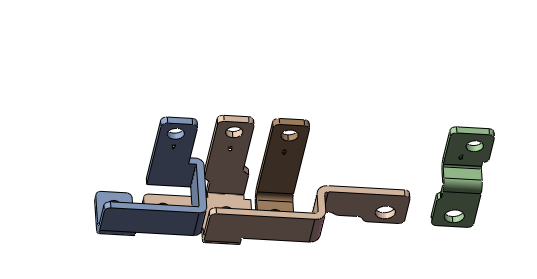The increasing demands for sheet metal copper components by electric cars
Due to several key factors related to electrical systems and operating requirements, new energy electric vehicles require more copper or brass parts during the manufacturing process than traditional fuel vehicles. The transition to electric vehicles has resulted in increased demand for copper and brass components to support their electrical infrastructure and ensure efficient and reliable performance. Here are some reasons why new energy electric vehicles require more copper or brass parts than traditional fuel vehicles:
Electrical conductivity: Copper and brass are known for their excellent electrical conductivity, making them important materials for conducting electricity in various components of electric vehicles. From wiring harnesses to connectors and busbars, copper and brass parts are critical to the transmission and distribution of power within a vehicle’s electrical system.
Power electronics and battery systems: Electric vehicles rely on advanced power electronics and high-voltage battery systems for propulsion and energy storage. Copper and brass parts are integral in the construction of power electronic modules, battery interconnects and thermal management systems. These components help manage the flow of electrical energy, dissipate heat, and ensure safe and efficient operation of the vehicle’s powertrain.
Charging infrastructure: With the popularity of electric vehicles, the demand for charging infrastructure has grown significantly. Copper and brass components are used to build charging stations, connectors and conductive elements to facilitate the transmission of electricity from the grid to vehicle batteries. These components require high conductivity and durability to meet the demands of fast charging and repeated connection cycles.
Thermal management and heat dissipation: Copper and brass are valued for their thermal conductivity, making them suitable for applications where heat dissipation is critical. In electric vehicles, these materials are used in heat exchangers, cooling systems and thermal interfaces to manage the temperature of power electronics, battery packs and electric motors to ensure optimal performance and longevity.
Electromagnetic compatibility: Copper and brass components are critical to ensuring electromagnetic compatibility (EMC) and electromagnetic interference (EMI) shielding within electric vehicles. These materials are used in the design of shielding enclosures, grounding systems and connectors to mitigate electromagnetic interference and maintain the integrity of sensitive electronic systems on vehicles.
In conclusion, the shift to new energy electric vehicles has increased the demand for copper and brass parts due to the unique electrical and operating requirements of these vehicles. The excellent electrical conductivity, thermal properties, durability and electromagnetic compatibility of copper and brass make them important materials to support the efficient and reliable operation of electric vehicles. As the automotive industry continues to embrace electrification, the role of copper and brass components in powering and supporting new energy electric vehicles will remain integral to their performance and functionality.
The development of new energy electric vehicles has had a significant impact on the sheet metal manufacturing industry. Electric vehicle demands for sheet metal parts, stampings, copper connectors and busbars create a busy and dynamic environment for sheet metal manufacturers like HY Metals. Recently, HY Metals got lots of orders about copper and brass sheet metal parts and CNC machined parts from automotive industry customers.
By employing advanced manufacturing, stamping and prototyping processes, HY Metals can meet the evolving needs of the electric vehicle industry and contribute to the advancement of sustainable transportation.
Post time: May-13-2024



